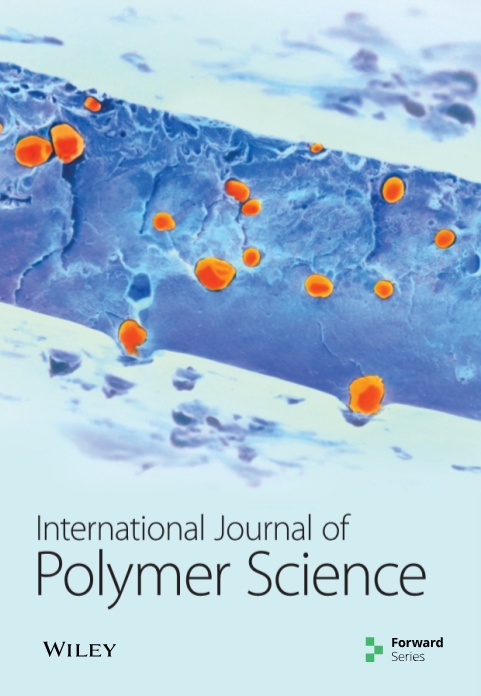基于响应面法的氨氯地平-聚合物纳米复合材料的制备与评价
IF 4.4
4区 化学
Q2 POLYMER SCIENCE
引用次数: 3
摘要
介绍。聚合物纳米颗粒是将药物输送到特定部位和提高药物生物利用度的关键工具。的目标。本研究旨在利用聚酰胺-二硫化物纳米颗粒作为药物递送系统。方法。以氨氯地平(Amlop)为模型,形成Amlop-聚合物纳米复合材料。在这项工作中,我们研究了自变量(聚合物、Fe3+、Al3+和pH)对因变量(负载效率(%LE)、zeta电位和粒径)的影响。采用肌力法制备纳米复合材料。采用粉末x射线衍射(PXRD)、场发射扫描电镜(FE-SEM)、傅里叶变换红外光谱(FTIR)和释放研究对纳米复合材料进行了表征。结果。从XRD数据来看,amlop -聚合物纳米复合材料呈现半结晶性。此外,药物峰的消失表明药物在聚合物分子之间结合,并且在行为上是非定形的。纳米复合材料的FTIR显示了药物的官能团,这表明Amlop被纳入纳米复合材料中。FE-SEM结果表明,纳米复合材料的平均粒径约为130 nm。发现氨氯地平从氨氯地平聚合物纳米复合材料中释放是可控的,在大约24小时内释放约85%。结论。酰胺-二硫化物聚合物纳米颗粒是不同类型药物的有前途的载体。本文章由计算机程序翻译,如有差异,请以英文原文为准。
Development and Evaluation of Amlodipine-Polymer Nanocomposites Using Response Surface Methodology
Introduction. Polymer nanoparticles are a key tool to deliver drugs to specific sites and to increase drug bioavailability. Aim. This research aims to use poly amide-disulfide nanoparticles as drug delivery systems. Method. Amlodipine (Amlop) was used as a model, forming Amlop-polymer nanocomposites. In this work, we investigated the effect of independent variables (polymer, Fe3+, Al3+, and pH) on the dependent variables (loading efficiency (%LE), zeta potential, and particle size). Nanocomposites were prepared by an inotropic method. Nanocomposites were characterized by powder X-ray diffraction (PXRD), field emission scanning electron microscopy (FE-SEM), Fourier transform infrared spectroscopy (FTIR), and a release study. Results. From the XRD data, the Amlop-polymer nanocomposite shows semi crystallinity. In addition, the disappearance of drug peaks indicates that the drug was incorporated between the polymer molecules and was amorphous in behavior. The FTIR for the nanocomposite shows the functional group of the drug, which indicates the incorporation of Amlop into the nanocomposite. From FE-SEM, the results showed that our nanocomposites have an average particle size of approximately 130 nm. The release of amlodipine from the Amlop-polymer nanocomposite was found to be controlled, with approximately 85% within approximately 24 hours. Conclusion. The amide-disulfide polymer nanoparticles are promising carriers for different types of drugs.
求助全文
通过发布文献求助,成功后即可免费获取论文全文。
去求助
来源期刊

International Journal of Polymer Science
POLYMER SCIENCE-
CiteScore
6.10
自引率
0.00%
发文量
55
审稿时长
>12 weeks
期刊介绍:
The International Journal of Polymer Science is a peer-reviewed, Open Access journal that publishes original research articles as well as review articles on the chemistry and physics of macromolecules.
 求助内容:
求助内容: 应助结果提醒方式:
应助结果提醒方式:


